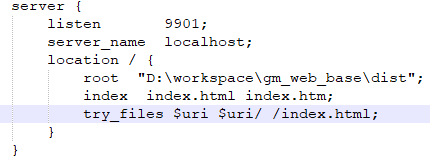我写一个程序tensorflow处理Kaggle的数位识别problem.Program可以正常运行,但训练精度总是很低,约10%,如下列:
step 0, training accuracy 0.11
step 100, training accuracy 0.13
step 200, training accuracy 0.21
step 300, training accuracy 0.12
step 400, training accuracy 0.07
step 500, training accuracy 0.08
step 600, training accuracy 0.15
step 700, training accuracy 0.05
step 800, training accuracy 0.08
step 900, training accuracy 0.12
step 1000, training accuracy 0.05
step 1100, training accuracy 0.09
step 1200, training accuracy 0.12
step 1300, training accuracy 0.1
step 1400, training accuracy 0.08
step 1500, training accuracy 0.11
step 1600, training accuracy 0.17
step 1700, training accuracy 0.13
step 1800, training accuracy 0.11
step 1900, training accuracy 0.13
step 2000, training accuracy 0.07
……
以下是我的代码:
def weight_variable(shape):
initial = tf.truncated_normal(shape, stddev=0.1)
return tf.Variable(initial)
def bias_variable(shape):
initial = tf.constant(0.1, shape=shape)
return tf.Variable(initial)
def conv2d(x, w):
return tf.nn.conv2d(x, w, strides=[1, 1, 1, 1], padding='SAME')
def max_pool_2x2(x):
# ksize = [batch, heigh, width, channels], strides=[batch, stride, stride, channels]
return tf.nn.max_pool(x, ksize=[1, 2, 2, 1], strides=[1, 2, 2, 1], padding='SAME')
x = tf.placeholder(tf.float32, [None, 784])
y_ = tf.placeholder(tf.float32, [None, 10])
keep_prob = tf.placeholder(tf.float32)
x_image = tf.placeholder(tf.float32, [None, 28, 28, 1])
w_conv1 = weight_variable([5, 5, 1, 32])
b_conv1 = bias_variable([32])
h_conv1 = tf.nn.relu(conv2d(x_image, w_conv1) + b_conv1)
h_pool1 = max_pool_2x2(h_conv1)
w_conv2 = weight_variable([5, 5, 32, 64])
b_conv2 = bias_variable([64])
h_conv2 = tf.nn.relu(conv2d(h_pool1, w_conv2) + b_conv2)
h_pool2 = max_pool_2x2(h_conv2)
w_fc1 = weight_variable([7 * 7 * 64, 1024])
b_fc1 = bias_variable([1024])
h_pool2_flat = tf.reshape(h_pool2, [-1, 7 * 7 * 64])
h_fc1 = tf.nn.relu(tf.matmul(h_pool2_flat, w_fc1) + b_fc1)
# dropout
keep_prob = tf.placeholder(tf.float32)
h_fc1_drop = tf.nn.dropout(h_fc1, keep_prob)
# softmax
w_fc2 = weight_variable([1024, 10])
b_fc2 = bias_variable([10])
y_conv = tf.nn.softmax(tf.matmul(h_fc1_drop, w_fc2) + b_fc2)
cross_entropy = tf.reduce_mean(-tf.reduce_sum(y_ * tf.log(y_conv), reduction_indices=[1]))
train_step = tf.train.AdamOptimizer(10e-4).minimize(cross_entropy)
correct_prediction = tf.equal(tf.argmax(y_conv, 1), tf.argmax(y_, 1))
accuracy = tf.reduce_mean(tf.cast(correct_prediction, tf.float32))
def get_batch(i, size, train, label):
startIndex = (i * size) % 42000
endIndex = startIndex + size
batch_X = train[startIndex : endIndex]
batch_Y = label[startIndex : endIndex]
return batch_X, batch_Y
data = pd.read_csv('train.csv')
train_data = data.drop(['label'], axis=1)
train_data = train_data.values.astype(dtype=np.float32)
train_data = train_data.reshape(42000, 28, 28, 1)
label_data = data['label'].tolist()
label_data = tf.one_hot(label_data, depth=10)
label_data = tf.Session().run(label_data).astype(dtype=np.float64)
batch_size = 100
tf.global_variables_initializer().run()
for i in range(20000):
batch_x, batch_y = get_batch(i, batch_size, train_data, label_data)
if i % 100 == 0:
train_accuracy = accuracy.eval(feed_dict={x_image: batch_x, y_: batch_y, keep_prob: 1.0})
print("step %d, training accuracy %g" % (i, train_accuracy))
train_step.run(feed_dict={x_image: batch_x, y_: batch_y, keep_prob: 0.9})
我不知道什么地方错了我的计划。


